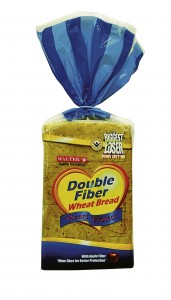
A DIET rich in high-fiber foods such as fortified bread is an essential part of a healthy dietary lifestyle.
Television program “The Biggest Loser Pinoy Edition” is an interesting eye-opener.
Aside from generating a spark of inspiration for overweight and obese viewers, this weight loss reality show hints that, as a number of the contestants related, fad diets are not what they are advertised to be.
“In the beginning, the strict rules that a number of these fad diets require proved easy and even exciting to follow. But in the long run, these same rules became too restricting for them that they eventually fell off the diet and went back to their old habits,” reported Nadine Tengco, the program’s resident nutritionist.
Tengco, who is a United States-trained fitness nutritionist and weight-loss coach, believes that the only sure thing about fad diets is that they make one’s wallet slimmer.
No magic diet
“I always remind the contestants as well as all my clients in my clinic/spa that if any one of these fad diets worked, the problem of obesity would likely have been solved years ago. Indeed, there are no magic diet or special foods that can easily undo the long-term effects of overeating and lack of exercise,” Tengco said.
As a matter of fact, the age-old technique of gradual weight loss is still the safest and most most effective in keeping the lost weight off permanently.
“I always tell the contestants and my clients that they only have to be mindful of what they put on their plate. And so as not to be bothered about how many grams or how many slices or pieces, I tell them to just ‘divide’ their plate into sections: One half of the plate should contain vegetables and fruits. No compromise here. The meat, whether it’s fish, meat, or poultry or combination (sources of protein) should only fill up a quarter portion of the plate. The rice should not go beyond one-fourth of the plate’s space,” Tengco said.
According to her, this strategy worked so well on the contestants.
And don’t forget to check the nutritional labels of what you are about to buy or prepare.
“Take time to read the nutrition labels. You will be surprised at what you may discover. One best example is when I was shopping for sugar-free wheat bread. While most of the bread manufacturers did remove the sugar ingredient they forgot to take into account that the carbohydrates contained in the flour ingredient will eventually be converted by the body into sugar—more than enough to raise a person’s blood glucose level immediately after eating,” Tengco warned.
Considering the health condition of the contestants as well as those viewers who have weight problems, she recommended using Walter brand of high-fiber-containing bread.
“When we shopped for bread products that we will use for the contestants, we discovered that the Walter brand is the only locally made and reasonably priced high fiber-containing bread that really took the initiative to improve their products to help those trying to lose weight or at least stay fit and healthy,” Tengco related.
Better tasting
She noted that Walter has found a way to make their wheat bread moist and better tasting.
“Eating should not only be nutritious but more importantly pleasurable. Despite the health benefits associated with eating bread high in fiber contents, most consumers are still reluctant to switch because they find this type of bread dry and tasteless,” Tengco said.
To solve this challenge, Walter Co, president of Creative Bakers Co. Inc. (maker of Walter Bread) explained that they added apple fiber to the mix as this imparts a subtle sweet note to the bread.
“We also used more expensive type of basic ingredients because it will eventually show in the taste if one relies on low-quality yet more affordable ingredients,” Co explained.
He said fortifying bread products with fiber is important. While soluble fiber forms a gel in the digestive tract, which slows digestion and prevents the body from absorbing too much starch and sugar (resulting in lowering cholesterol by 10 to 15 percent), insoluble fiber on the other hand absorbs water, creating bulkier stool and helps the bowels move quickly through the digestive tract.
Combining these two types of fiber in bread products could help overweight and obese consumers not to overeat as both help in making one feel full for a long period of time (and not feel hungry between meals).
Deliver
“Since many Filipinos cannot eat a complete meal, adding certain nutrients to staple foods, such as bread, could help significantly. Like rice, the popularity of bread is also universal,” Co suggested, adding that fortified bread could also deliver vitamins and minerals to large segments of the population without requiring changes in eating practices.
“Our company has for long been well aware of nutrients crucial for health. More than offering fresh, highly nutritious bread products, the company has been in the forefront of ensuring that our bread products are also great tasting,” Co assured.
“We have been baking bread for two decades and ever since the Food Fortification Law of 2000 (Republic Act 8976) was promulgated, we have enhanced our bread products with all the required nutrients. Then in 2005, we even improved on our product lineup by introducing new variants like the Walter Sugar-free Wheat Pan de Sal and Walter Double Fiber Wheat Bread with Heart Protect,” Co said.
He added that their sugar-free bread products could be safely eaten by diabetics and weight watchers as it uses isomalt, an excellent tasting sugar-free sweetener. Both Walter Sugar Free Wheat Bread and Walter Sugar Free Wheat Pan de Sal have low glycemic index (which ranks foods on how they affect our blood glucose levels) due to its complex carbohydrates and fibers, making them very suitable for diabetics who need to prevent sugar spikes whenever they eat bread,” he said.

